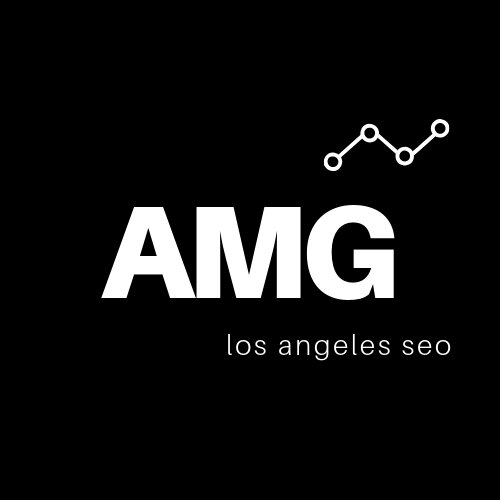
Here’s How You Can Become a Diverse, Inclusive, and Profitable E-Commerce Brand
As a business owner, you know that selling your product or service to the broadest audience possible is the best game plan for profitability. But as one study, in particular, confirms diversity in advertising can enhance the public’s perception of your brand and pad your bottom line.
Here’s how to turn things around and become more diverse and inclusive—and therefore more profitable.
What Does Diversity Mean to Consumers?
In the simplest terms, you could explain diversity as the ability of the consumer to see themselves in your ads. If you want more people to buy your product or invest in your service, you need to be relatable and showcase how your brand meets their needs.
But if you’re looking at advertising from a narrow personal perspective, you’re missing huge subsets of consumers.
Overall, diversity spans racial, ethnic, socioeconomic, geographic, academic, professional, religious, political, sexual, heritage, and life experience differences, too.
A few examples of diverse groups in today’s world include:
Women
People of color
People with disabilities
People who identify as LGBTQ+
People from lower socioeconomic backgrounds
Religious minorities
Various generations of consumers
The study cited by Fast Company explored 50 brands and their illustrations of consumers in advertisements and marketing materials. Brands that factored the above groups into their advertising campaigns saw a 44 percent stock increase over a two-year period.
Clearly, diversity is a priority to consumers—which is why it matters to companies, too. If you’re going to invest in eCommerce SEO and drive organic traffic to your brand’s website, you want everyone to feel welcome.
How to Create a More Inclusive Brand
Source: Rawpixel
While diversity in your marketing materials is one way to enhance brand perception, inclusivity within your organization needs to come first.
After all, how can you expect your employees to produce meaningfully diverse content when every member of the team is from the same demographic group?
Here are strategies for becoming more inclusive within your organization—and promoting those ideals through your marketing efforts.
Establish Diverse Leadership Teams
It’s a fact that more diverse companies produce more revenue. But it’s diverse leadership that makes the difference, explains Forbes. A study investigated over 1,700 companies and found that higher diversity led to a 19 percent higher revenue.
Taking steps to implement diversity-friendly policies and a workplace that’s welcoming to people of all backgrounds can go a long way toward reaching your brand’s long-term diversity goals.
Don’t Pigeonhole Team Members
While hiring diverse team members is a great way to be more inclusive as a brand, smaller actions matter, too. For example, Biz Journals recommends that organizations recognize the “scope of diversity.” Meaning, don’t categorize or assign employees tasks based on their roles.
Instead, allow their strengths—and their input—to drive the team’s efforts. Similarly, assigning someone a specific role because of their gender or background is also a no-no.
Approach Diversity as a Viewpoint, Not a Project
As Forbes explains, it’s crucial to recognize that diversity isn’t a project your company can complete one time. Diversity needs to be a lens through which your organization looks at its structure, processes, and people.
Because of the continuously evolving state of diversity, appointing a diversity manager and mandating training likely won’t achieve results. Instead, Forbes’ expert suggests creating a central team of allies that can help build change.
In addition to enacting guidelines on hiring more diverse team members, you’ll also need a system for addressing inequities in the workplace. You may also need processes for diffusing microaggressions and other challenges of diversifying the workplace.
How to Increase Diversity in Advertising
Source: Pexels
The simplest way to increase diversity in e-commerce is by addressing your advertising. By doing so, you’ll be miles ahead of other organizations.
Choose More Diverse Stock Photos
It’s easy to search for a keyword and grab the first photo that pops up. Especially when you’re sourcing free images on stock websites, the majority may be of Caucasian-looking people in traditional gender roles. In fact, many stock photos employ stereotypes simply due to the photographer’s perceptions or background.
Developing a company policy in favor of more diverse imagery on your e-commerce site is a simple way to make this change. As Adobe explains, 61 percent of Americans “find diversity in advertising important.”
So, even if your readership or buyers don’t identify as minorities, diversity is just as important to them as it is to everyone else. Plus, 34 percent of respondents in the same survey said they had boycotted a brand due to a lack of diversity.
Knowing this, why wouldn’t you swap a few photos out on your e-commerce site? After all, it’s far more affordable for a brand to implement more diversity in its online branding than trying to survive and recover from a boycott.
Plus, it could earn your company more revenue. For example, LGBTQ+ consumers are often referred to as the most undervalued economy in the world, with a spending power of $4.6 trillion. Imagine the potential for growth if you catered to those consumers’ needs and values.
Select a Wide Range of Models
Especially when it comes to advertising women’s clothing, diversity in real-life models is vital.
After all, 84 percent of female shoppers prefer brands that employ a “variety of body types,” confirmed a Yotpo survey. Many of those female shoppers (75.3 percent) also preferred brands that showcased diverse ethnicities in their marketing materials.
Case in point? The Dove Real Beauty Campaign.
In 2004, Dove released a campaign promoting natural beauty and diversity, without photoshop or image retouching. Parent company Unilever released a series of award-winning ads that spurred sales and put Dove in the spotlight.
On that same note, if your company sells clothing, you may also want to take a critical look at your size range. For reference, in 2016, the women’s plus-size apparel market earned $20.4 billion. If your brand caters to under-10 sizes only, that’s a significant profit left on the table.
Expand Advertising Efforts
Source: Rawpixel
Targeting sales ads on platforms like Facebook is often a low-cost way to reach consumers. But keeping diversity in mind, focusing solely on Facebook advertising is skipping over entire groups of consumers.
While the majority of consumers still lurk on Facebook (at least once per day in most cases), targeting different audiences requires your brand to expand its horizons.
For example:
Nielsen highlights that Asian Americans are more likely than any other demographic group to have internet-connected TV devices (90 percent of households own one or more). Creating ads for smart TV platforms or apps could be a great use of your marketing budget.
Nielsen also notes that Black consumers spent $473 million in a haircare industry worth $4.2 billion. And unlike other ethnic groups, Nielsen confirms that African Americans are more likely to interact with brands on social media or show their support for companies. Twitter may also be a better ad platform for addressing Black consumers than Facebook, based on Nielsen’s analysis.
As HootSuite highlights, Instagram’s consumer base is mostly women (52 percent) and mostly young (75 percent of users are aged 18 to 24). At the same time, 89 percent of Instagram users are from outside the US. Depending on your product, IG might prove an instrumental marketing tool for your industry.
Garnering brand loyalty from your diverse clientele is not only the right thing to do—but it can be lucrative over the long term as well.
Recognizing the media habits of different consumer groups can help your brand target ad campaigns to suit. At the very least, these insights can help you angle advertising in a way that speaks to consumers, whatever platform they view your ads on.
How Not to Approach Diversity in Advertising
Source: Pexels
Devising a smart advertising campaign that offends no one and appeals to your target demographic may sound simple. Especially if you have a diverse marketing team and an attitude of inclusion, you may think you can’t go wrong.
Unfortunately, even the biggest brands can make missteps when it comes to implementing diversity in ad campaigns.
Entrepreneur highlights multiple ad campaigns that offended Black consumers, specifically, including:
Gap’s use of a younger Black child as a ‘prop’ to an older white child
Dove’s GIF snafu, which involved a Black woman “changing” into a white woman, and
H&M’s use of a Black child model to showcase a sweatshirt with the phrase “coolest monkey in the jungle” on it
With such big names on those marketing mistakes, it can feel daunting to try and add more diverse people and ideas to your ad campaigns. To that end, here are tips on what not to do when rolling out fresh concepts for your e-commerce business.
Don’t Add Diversity as an Afterthought
When you’re pushing diversity to the forefront, it doesn’t pay to use diverse characters in negative ways. For example, the film industry has often used minority characters in supporting roles.
Think about Asian actors playing laundromat owners or Black actors portraying criminals. These ‘characters’ add nothing to the plot, except perhaps to make the leading (often white) character look better.
A stark departure from the film industry’s lack of diversity was the movie Black Panther. Considering the cultural impact of the film (Vox, for one, called it “a gorgeous, groundbreaking celebration of black culture”), it’s clear that the millions invested were worth it to Marvel.
But, how does this translate to the e-commerce industry? It’s simple.
People—consumers—want to see themselves represented in media. They’re more likely to buy your product, support your business, and rep for your brand if they can relate to it. Diverse consumers are even more likely to support your company if they feel like you’re speaking directly to them.
Black Panther combined influences from several African cultures and leaned heavily on diverse talent to cast the film. Instead of worrying about offending the “majority” culture, it catered to those who felt less represented in media—and it definitely paid off.
Don’t Wait Too Long to Tap Diverse Team Members
Though Dove, Gap, and H&M’s marketing mistakes were arguably detrimental to their brands, they could have been prevented. Just think: a diverse marketing team featuring people of color could have stopped those commercials and ad campaigns before they offended consumers—and tanked sales.
Don’t be like big brands and wait until a public relations nightmare rocks your profits. Tap diverse team members for their honest opinions before releasing inclusivity-focused ad campaigns.
Even if you’re trying to do good, it’s possible to make things worse by ignoring the opinions of the demographic groups in question.
Don’t Avoid Speaking Out for Activism
Especially given the turmoil in the United States, brands are becoming increasingly aware of their consumers’ passion about specific causes. As World Trademark Review explains, brand activism can be a positive influence on consumer perception.
That’s not to say you should choose any old cause to take up, of course. Authenticity is essential, as consumers want to know that you truly care about the causes they support.
To put your best foot forward as an e-commerce brand, Inc. recommends choosing an issue (and only one) that your consumers care about. Make sure it’s something that aligns with your brand, as well, choosing a social issue that you can speak as an expert on.
You don’t necessarily need to choose a “trendy” cause, either—that may actually earn your brand backlash from consumers. Remember to be authentic and take steps toward real support, whether that’s donating to a cause or holding special events to increase awareness.
Don’t Forget About Accessibility
A significant part of both diversity and inclusion is ensuring accessibility on your e-commerce site. People with disabilities make up 19 percent of the US population, after all.
Adding accessible features to your site can help those visitors feel seen and enable them to make purchases independently. As the Bureau of Internet Accessibility explains, you should cover accessibility elements for conditions such as:
Blindness, including color blindness
Motor disabilities
Cognitive disabilities
Doing so ensures a better experience for consumers navigating to your site.
Get Started Creating a Diverse and Inclusive E-Commerce Brand
Regardless of the success of your e-commerce brand, it’s worth approaching your business model with a lens of inclusivity. Expanding your marketing endeavors to include more diverse groups—if done right—has zero downsides. It may take time (and a bit of an investment up-front), but earning loyal customers is worth the effort.





